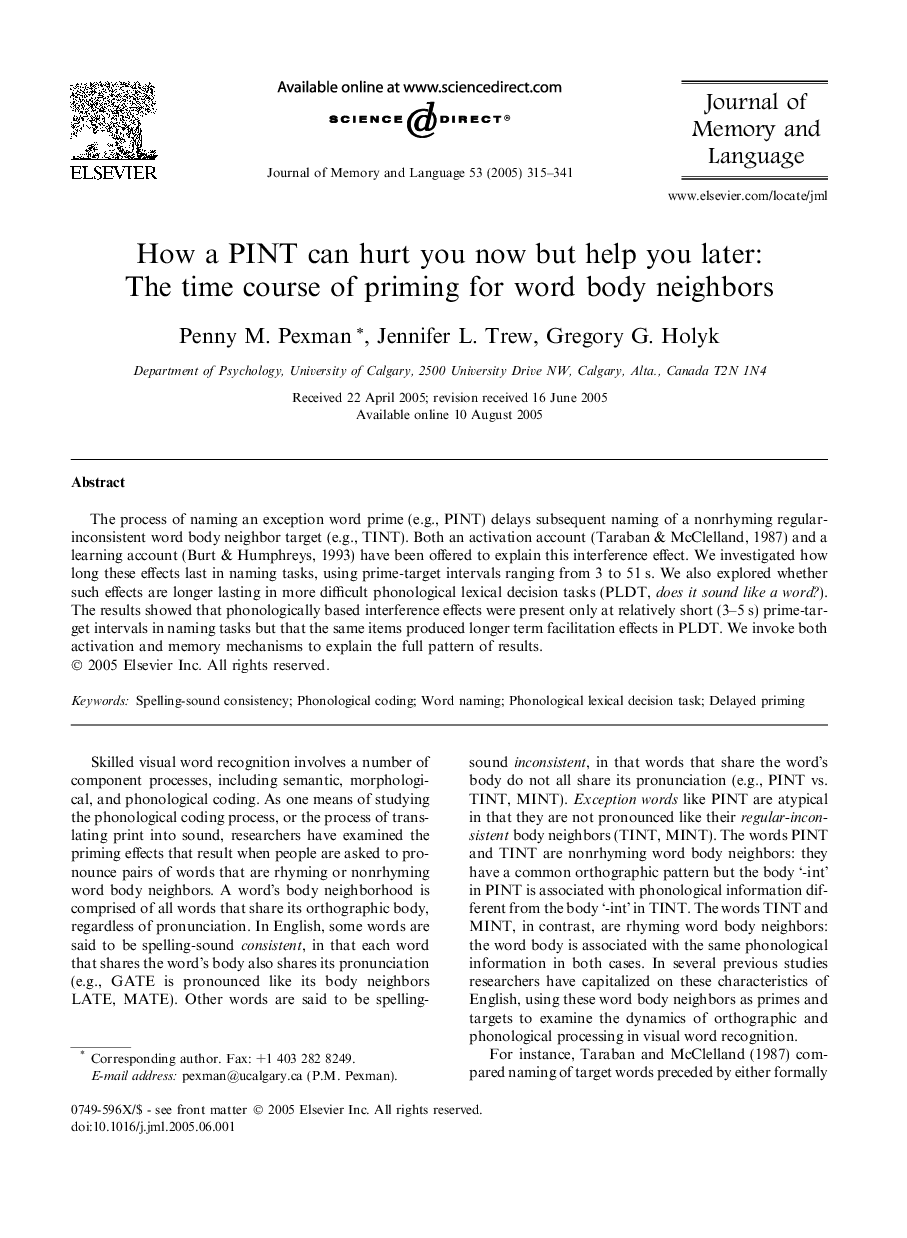| Article ID | Journal | Published Year | Pages | File Type |
|---|---|---|---|---|
| 10459805 | Journal of Memory and Language | 2005 | 27 Pages |
Abstract
The process of naming an exception word prime (e.g., PINT) delays subsequent naming of a nonrhyming regular-inconsistent word body neighbor target (e.g., TINT). Both an activation account (Taraban & McClelland, 1987) and a learning account (Burt & Humphreys, 1993) have been offered to explain this interference effect. We investigated how long these effects last in naming tasks, using prime-target intervals ranging from 3 to 51Â s. We also explored whether such effects are longer lasting in more difficult phonological lexical decision tasks (PLDT, does it sound like a word?). The results showed that phonologically based interference effects were present only at relatively short (3-5Â s) prime-target intervals in naming tasks but that the same items produced longer term facilitation effects in PLDT. We invoke both activation and memory mechanisms to explain the full pattern of results.
Keywords
Related Topics
Life Sciences
Neuroscience
Cognitive Neuroscience
Authors
Penny M. Pexman, Jennifer L. Trew, Gregory G. Holyk,
